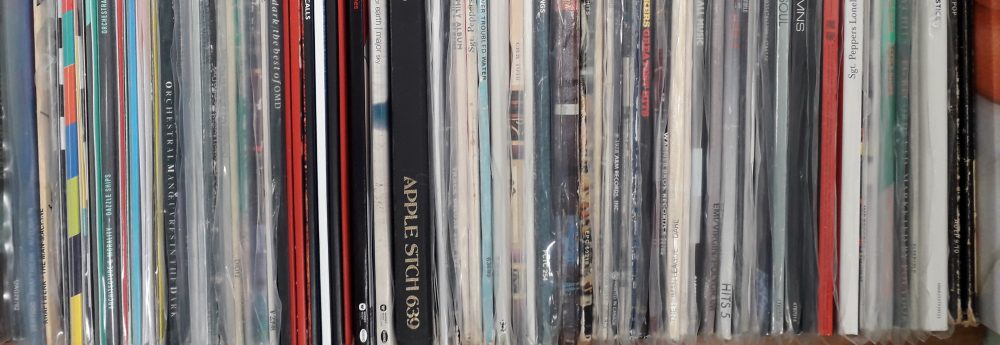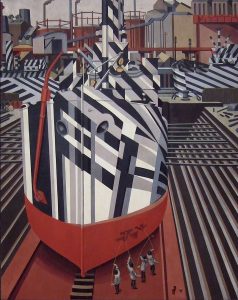There was a point last year where I saw New Order’s second studio album Power, Corruption, Lies at every record fair I went to and in every secondhand record shop – and then all of a sudden, they seemed to disappear. Who knows why, but perhaps people had discovered what a great album Power, Corruption, Lies, released in May 1983 is?
Either way, this album saw the band’s sound move on since the release of Movement eighteen months or so earlier, becoming more electronic, with greater emphasis on synths. Many critics saw it as the album where New Order finally stepped out of the shadow of Joy Division. The album itself regularly made the best 100 albums of the 1980s lists and was ranked 216th in the NME’s top 500 albums of all time.
None of the tracks were released as singles, in keeping with the previous two albums and in fact is characteristic of New Order’s interesting relationship with the commercial world. They refused to go on Top of the Pops in the early 80s because they weren’t allowed to play live and Stephen Morris, the drummer, once commented that ‘if you believe in the charts, you might as well believe in fairies’.
Power, Corruption, Lies opens with the cracking Age of Consent described by Morris as a ‘fast dancy number’, with drums reused from the Hannett version of Love Will Tear Us Apart with a minor few changes. Other highlights include The Village, the title of which was inspired by the television series ‘The Prisoner’. The lyrics seem to reference the cover, but this was a co-incidence. It is however, the first song from New Order that had more than one sequenced bass line. 5 8 6 was named after the number of times each riff should play and some bits evolved into Blue Monday, which became the best selling 12″ of all time. Your Silent Face features a melodica and was referred to as the ‘Kraftwerky one’ as the band wanted it to sound like the intro to Europe Endless, though it too, soon evolved (as Morris says, you’d never catch Kraftwerk swearing!).
Morris says that the title of the album comes from the back of 1984, the dystopian George Orwell novel that Peter Hook (the bassist) was reading at the time. The artwork for the album was originally intended to feature a painting of a Renaissance prince as Saville felt that would fit with the decidedly Machiavellian title. However, Saville had gone to the National Gallery and searched in vain for something suitable. He recounted to The Observer in 2011 that after giving up for the day, he was in the giftshop buying some postcards, when Martha Ladly (of Martha and the Muffins fame) his then-girlfriend, asked him if he was going to use the Fantin-Latour painting, ‘A Basket of Roses’ for the cover. Saville thought it was a great idea because he felt the flowers suggested the way in which power, corruption and lies insinuate their way into everyday life. Now all that remained was to get permission to use the painting from the owner. At first, the National Heritage Trust refused to allow Factory Records to use it. However, when Tony Wilson (the head of the record label) phoned the National Gallery to ask who owned it, he was told the people of Britain. Wilson replied “I believe the people want it” and the rest is history…
There is minimal text on the album cover which fitted with the belief of the band and Saville that it was cooler not to have names or titles on the album. If you really liked the record, you’d find it… Whilst neither the band’s name, nor the title of the album appear on the UK release, there is a colour code in the top right that which represents the catalogue number, FACT 75 and is only decipherable using the colour wheel printed on the back. The code is used again on the inner sleeve and spells out the name of the album and the band. The bright, block code also provides a strong contrast to the still-life flower painting.
The album cover features in the Royal Mail’s Classic Album Cover postage stamps from 2010. This set also featured Tubular Bells with it’s photography from Trevor Key who worked extensively with Saville in the 1980s (more on that in a later post…), beginning with Joy Division’s Love Will Tear Us Apart.
So if you’ve not listened to PCL before, you’ve a treat in store. And if you have, well, you don’t need me to tell you that! Shall we start with a fast, dancy number?

